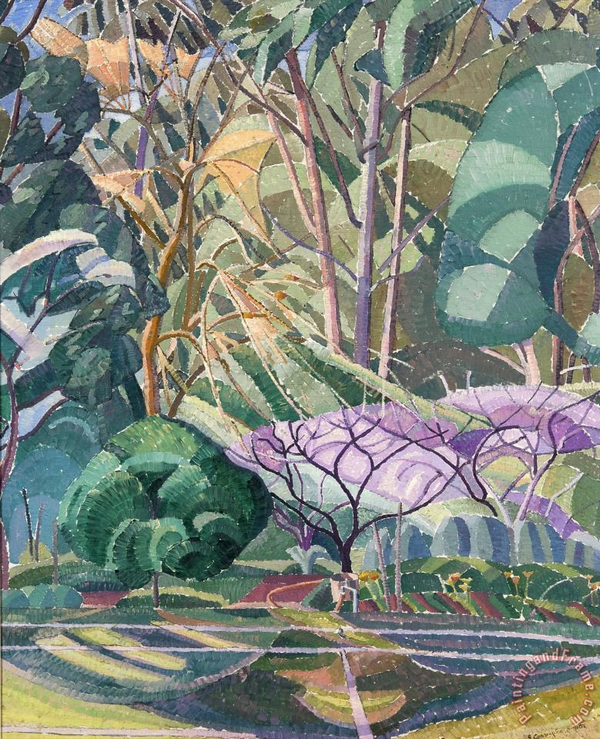
John Hull, an Australian theologian living in England, went blind in his forties. Black, black blind from detached retinas. His book describing the profound disorientation of self in blindness was the first I took up on my return to reading. It took some time to finish so closely did it echo my fears: the fear of the loss of self, of being cast from God’s light. The journey he recounts is as much of the passage of the soul through darkness as of the daily reality which came with a blindness so complete that he knew that he faced the sun only by the sensation of heat on his face. Even food, unseen, lost its appeal. He was no longer hungry. Life as well as sight dimmed within him.
While he struggled with the real limitations of a life without sight, treading his way with cautious steps to avoid the sudden slide when the ground slopes, or the path diverges, or obstacles block the way, he struggled also with the archetype of blindness within which he felt himself enclosed. At first the meanings he could give to the dark were as closed and as isolated as the world he inhabited even in the midst of a loving family. And indeed it is true that in many cultures, and certainly in ours, blindness has been crudely associated with a condition of unrelatedness: of being cast out, along, ignorant and confused. Because blindness disrupts the distinction between the known and the not-known that is regulated for the rest of us by sight, it represents, he says, dissolution, the borderline between being and not being. An alternative to death; as good as death.
Immersed in this archetype, unable to deny, or refuse it, yet not accepting it either, a glimmer of light flickered, a small beacon which took the form of a paradox, which as a theologian John Hull was quick to grasp, thought as a blind man slow to understand. For of course there is a paradox. For God, that transcendent being, as the blind psalmist sings, darkness and light are both alike to thee. It is for us with our dualistic either/or thinking that one is cast from the other, that one is held in opposition to the other. But a greater reality, and one we resist in our fearfulness and limitation, is that of light in darkness, and, more to the point, that of darkness in light. None of those who dwell so noisily in the realm of light wish to consider that light might contain its own darkness. And there is little in our culture to help those who inhabit the darkness grope their way to light.
 In Stravinsky’s Lunch, Drusilla Modjeska notes that, in her struggle to write the story of Australian painter Stella Bowen, she gave up at one point and, instead, wrote the “novel” The Orchard. I put novel in quotes because there are many essay-like passages, including a number related to Stella Bowen, that appear to be much more the thoughts of the author than of the nameless narrator in whose voice the story is told.
In Stravinsky’s Lunch, Drusilla Modjeska notes that, in her struggle to write the story of Australian painter Stella Bowen, she gave up at one point and, instead, wrote the “novel” The Orchard. I put novel in quotes because there are many essay-like passages, including a number related to Stella Bowen, that appear to be much more the thoughts of the author than of the nameless narrator in whose voice the story is told.
Modjeska attempted to weave her story around the old folk tale of “The Handless Maiden” (or “The Girl without Hands” or “The Girl with Silver Hands”). In the tale, a father cuts off his daughter’s hands in a bargain with the devil, and, many years later, her hands are restored through the love of the king who marries her. I say attempted because it’s only told at the end and, as far as I could tell, offered little to illuminate the story. The fictional element of the book is about several Australian women, united through their acquaintance with Effie, a woman in her eighties who has always pursued a very self-directed life, mostly tending to a garden seen by her friends as a haven.
Though I wasn’t persuaded by the fiction in the book, I found the narrator/Modjeska’s asides consistently interesting, and I read the book in one sitting, on a flight from Brussels to Dulles last month. Even if the novel per se wasn’t successful as such, it seems to have allowed her to work through thoughts that came together in the subsequent Stravinsky’s Lunch. Such as:
We live in a culture that daily encourages us to find our identity in that reflection of another, to experience ourselves as most real when we are in love. We live in a culture that encourages us to see ourselves as others see us. To become an object in the regard of others means that other become objects to us; and so too do we to ourselves. No wonder we are all in pursuit of control: to make sure that object is ours.
Considering that this was written before the Web exploded and social media and selfies became labels, there is a certain amount of prescience in this. Although I might argue that today, we are encouraged to think we are most real when we get a requisite number of “Likes” (in whatever form they might actually take).
[By the way, the Macmillan Australia hardcover edition I read has to have one of the most pleasant formats I’ve read in years. 7.5″ high by 4.5″ wide, it’s larger than a traditional paperback and smaller than a typical trade paperback or hardback, typeset in 11/13 Bembo. I would be happy to have a few hundred others like it — a perfect size for a myopic guy like me to travel with.]




